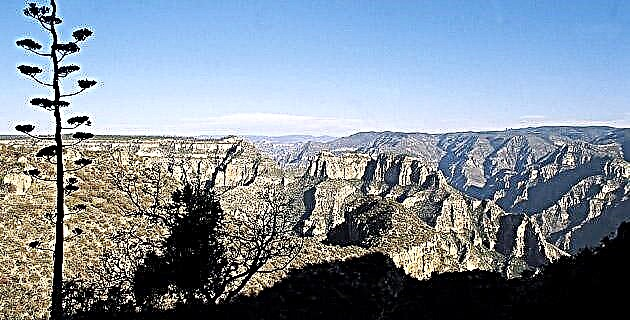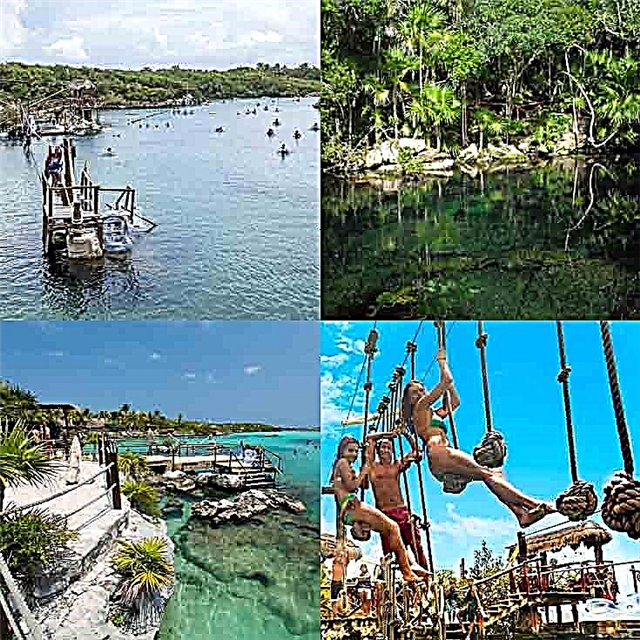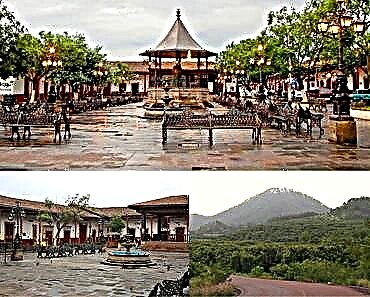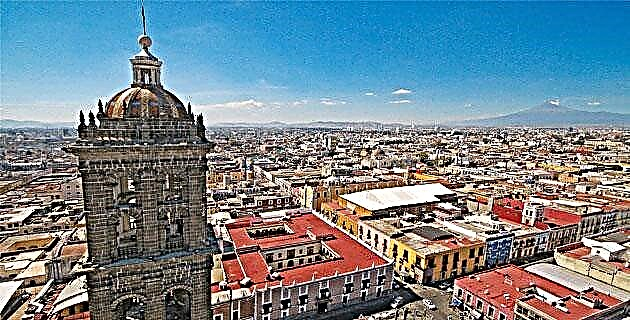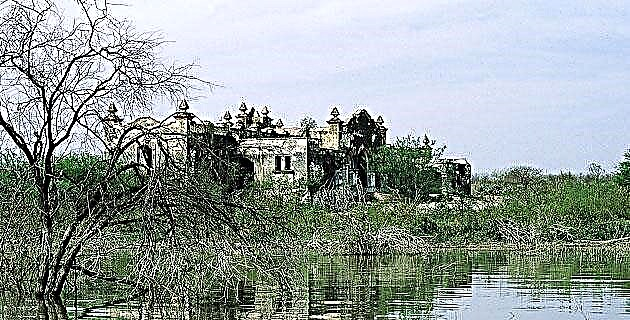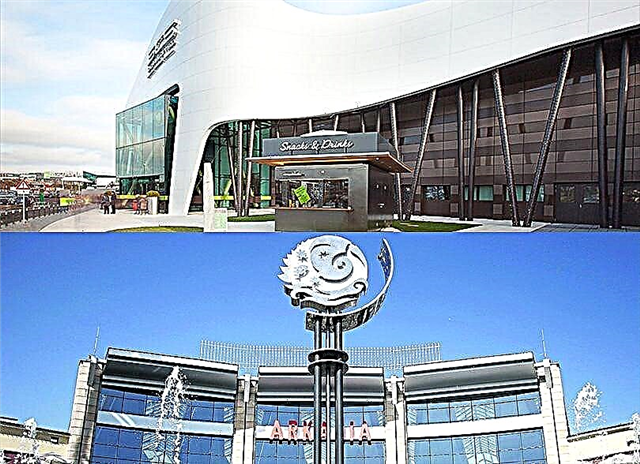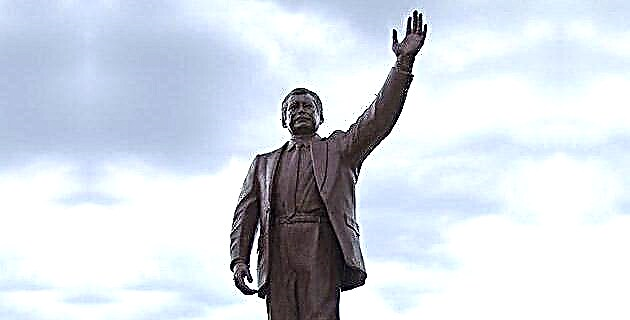Jantetelco: Its name means "place of the adobe pile", where the Augustinians built in 1570 a temple and convent dedicated to San Pedro Apóstol. Today the cloister is partially rebuilt.
Atlatlauhca: Its possible meaning in Nahuatl is "place of red water", alluding to the color of the streams that irrigated the area. The Augustinians built on this site a temple and convent between 1570 and 1580 of the temple-fortress type, with battlements and pyramidal finishes on the walls, a tower, two chapels and the open chapel that still conserves its belfry.
Coatetelco: In Nahuatl it means “place of mounds of serpents”. Here you can admire the temple of San Juan Bautista, a work of the 18th century and the museum that shows interesting prehistoric remains.
Jonacatepec: It means in Nahuatl "on the hill of the onions" and its main attraction is the temple and former convent founded by the Augustinians between 1566 and 1571.
In the surroundings are the Las Pilas spa and a small archaeological zone of the same name where there was a peculiar cult of water.
Mazatepec: It is a simple town that has a legend about the miraculous appearance of the image of Christ on the cross on the wall of a hermitage. Today the temple bears the name of Sanctuary of the Lord of Calvary and many faithful from the region come to it.
Ocotepec: This population is almost integrated into the city of Cuernavaca. Its temple shows a beautiful Baroque-style facade in mortar with popular motifs. The pantheon has tombs built like houses, a popular and innocent expression to keep the deceased in a house of dimensions very suitable for their souls.
Ocuituco: In this place the Augustinians in 1533 started an ambitious constructive program and abused the natives; as punishment, the King of Spain gave the town and its tithes to Fray Juan de Zumárraga. The temple was partially completed and the convent, dedicated to Santiago Apóstol, preserves some construction elements and two stone fountains.
Tepalcingo: Its name means "next to the flints" and it is a town that keeps a beautiful temple in the territory of Morelos. Its construction was carried out between the years 1759 and 1782 and was dedicated to San Martín Obispo. Its façade is carved in quarry and the iconographic composition is a delightful teaching of theology, with details that show indigenous participation.
Tepoztlán: Surrounded by an enchanting landscape of forest and mountains, this town was evangelized by the Dominicans who built a complex of temple and convent of great beauty; the facade of the temple has Renaissance ornamentation and the cloister preserves remains of mural painting and an excellent viewpoint on the second level, where you get a sensational view of the Sierra del Tepozteco.
Tetela del Volcán: Its name in Nahuatl means "place where rocky ground abounds." Its privileged location at the foot of the Popocatepetl volcano gives it a special atmosphere where the old convent built in 1581 stands out, which houses paintings painted with religious themes and in its sacristy there is a magnificent carved wooden ceiling.
Tlaquiltenango: This town perhaps stands out more for its history turned into legend than for its appearance. The Franciscans founded the convent between 1555 and 1565. The cloister preserves mural paintings and in 1909 a codex drawn on pieces of amate paper was found on its walls.
In the atrium the remains of three chapels can be seen. If you go to the convent to appreciate its architectural style and identify its antiquity; And if you happen to meet the parish priest, it is almost certain that you will know the stories and legends of Tlaquiltenango.
To the northeast of the town there is a work from the 16th century, called the “Rollo de Cortés”; which inside has a spiral staircase and was possibly a viewpoint.
Totolapan: It is another town founded by the Augustinians when they were deprived of Ocuituco; Here they built a temple and a convent between 1536 and 1545. The temple in its outer part has curious buttresses and the cloister exhibits its vaulted corridors.
Yecapixtla: This place surrounded by a pleasant landscape, is complemented by the temple and former convent of San Juan Bautista, built by the Augustinian Jorge de Avila around 1540. The complex is one of the most beautiful in the region due to the monumentality of its temple, It shows the image of a fortress, combining ornamental elements of the Gothic style, including its cover with a certain Plateresque influence. It preserves its posas chapels in the atrium and the cloister was left unfinished. During Holy Week Chinelos dances are performed.
Zacualpan de Amilpas: In this town Fray Juan Cruzate founded around 1535 a group of temple and convent that began to be built until 1550. The convent has strong medieval lines that resemble a fortress and it preserves part of the open chapel and a good sample of mural paintings, while in the temple you will be able to appreciate some good altarpieces and paintings from the 18th century. Market days are Sundays.
Jojutla de Juárez: This town is an important commercial center of the region. Attractive saddlery items are produced here.
Tres Marías: 25 km north of the city of Cuernavaca on Highway 95. Its original name is Tres Cumbres and it is a must-see for those who travel to the south, as there are established businesses that sell various Mexican snacks.
Zacualpan de Amilpas:. Although its appearance is typical of the municipalities of the state, be sure to visit it and try the excellent mezcal that is produced.
Anenecuilco: The distinguished agrarian Emiliano Zapata was born here, whose memory lives on in its corners and alleys. It is possible to visit the ruins of the house where he is said to have lived.
Cuautla: Its warm climate is conducive to fruit crops and favors the abundance of flowers that give the city a colorful appearance. Cuautla comes from the Nahuatl word Cuautlan, place of the eagles. It is a pleasant provincial town that has a large Main Square, numerous buildings from different periods, parks, gardens and museums, and an important aqueduct.
In this place José Ma. Morelos y Pavón and his troops, resisted the royalists in a siege that lasted 72 days in 1812. The insurgent troops took refuge in the convents of San Diego and Santo Domingo.
Huitzilac: In the wooded surroundings of this town, General Francisco Serrano, a staunch opponent of Alvaro Obregón, was assassinated on October 3, 1927.
San Juan Chinameca: The remains of the hacienda where Emiliano Zapata was sacrificed are preserved here.

